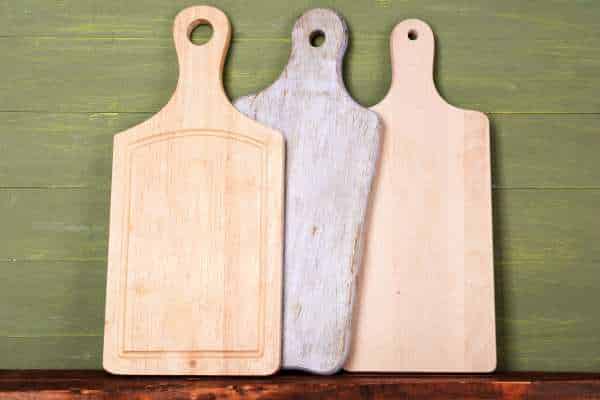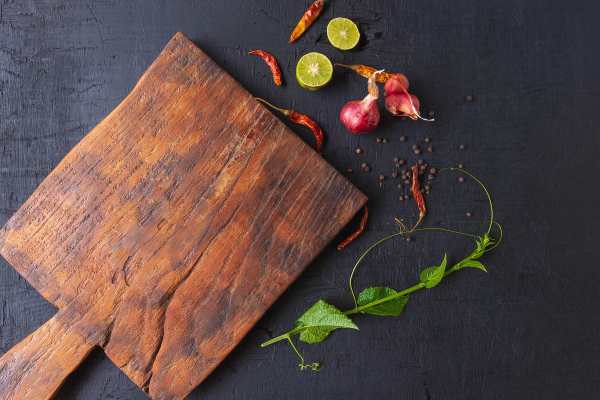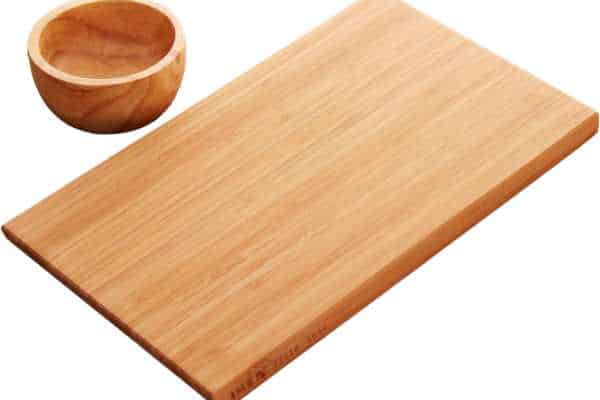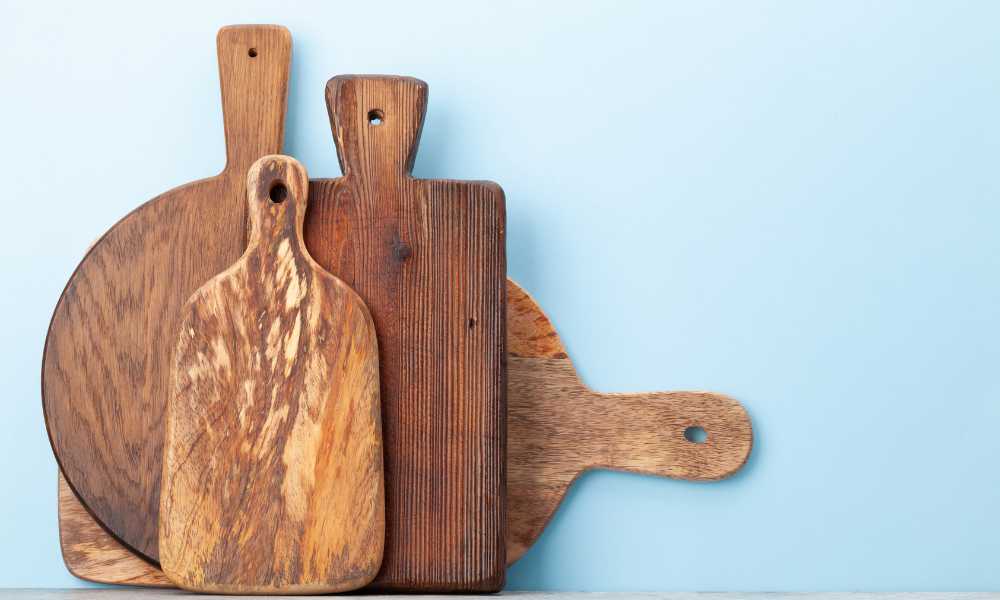Selecting the right wood for your cutting board is not just a matter of aesthetics—it’s a critical decision that impacts both the longevity of the board and the safety of your food preparation. In this guide, we will explore the unique qualities of various woods, from classic hardwoods like maple and walnut to sustainable options like bamboo. Whether you’re a professional chef or a home cooking enthusiast, understanding the properties that make certain woods ideal for cutting boards can enhance your culinary experience. Join us as we delve into the best choices for durability, maintenance, and hygiene to help you make an informed selection for your kitchen.
Understanding Wood Hardness and Durability

Understanding the hardness and durability of wood is paramount when selecting the ideal cutting board. The Janka hardness test, a measure of the resistance of wood to denting and wear, is crucial in this selection process. Woods with a higher Janka score are typically more durable and better suited for cutting boards as they withstand knife marks and maintain their structure over time. Additionally, the grain structure of the wood also plays a significant role. Tight-grained woods offer a smoother surface that is less prone to bacteria accumulation and easier to clean, making them superior choices for both safety and longevity in kitchen environments.
Types of Wood: Hardwood vs. Softwood
Choosing the right wood for a cutting board, understanding the difference between hardwood and softwood is essential. Hardwood comes from deciduous trees, such as maple and walnut, and is denser and more durable. This makes it a preferred choice for cutting boards, as it can withstand knife marks and resist bacteria better than softer woods. Softwood, derived from coniferous trees like pine, is less dense and prone to damage, making it less suitable for cutting boards. Opting for hardwood not only enhances the board’s longevity but also provides a safer and more hygienic surface for food preparation.
Best Hardwoods for Cutting Boards

Choosing the right hardwood for your cutting board is essential for both performance and aesthetics. Maple stands out as a premier choice due to its dense grain structure, making it durable and resistant to cuts and scratches. It is widely available and favored for its ability to prevent bacteria accumulation. Walnut, known for its rich, dark color, adds a touch of elegance to any kitchen. Beyond its visual appeal, walnut is remarkably durable, making it another excellent option for cutting boards. Both woods offer a perfect blend of functionality and style, ensuring your cutting board is a worthwhile investment for your culinary tasks.
Grain Types in Wood Cutting Boards

Choosing a cutting board, the grain type of the wood plays a crucial role in both its durability and impact on your knives. End grain cutting boards, recognized for their “checkerboard” appearance, are gentle on knives and self-heal from cuts, making them a top choice for chefs. Edge grain boards offer a more cost-effective solution with decent durability and easier maintenance. Face grain boards showcase the wood’s beauty but are more susceptible to scratches and wear. Each type has its advantages, whether you prioritize knife care, board longevity, or aesthetic appeal, making it important to select based on your specific cooking and maintenance preferences.
Bamboo: A Sustainable Alternative
Bamboo stands out as a sustainable alternative for cutting boards, championing eco-friendliness without sacrificing quality. Rapidly renewable, bamboo grows quickly and requires minimal resources, making it an environmentally conscious choice. When compared to traditional hardwoods, bamboo offers comparable durability, often outlasting other woods with proper care. It’s also easier to maintain, resisting water and knife marks better than softer wood options. This combination of sustainability, resilience, and low maintenance makes bamboo a smart choice for those looking to green their kitchen practices while keeping functionality in focus.
Wood Treatments and Finishes
Choosing the right finish for a wood cutting board is crucial to ensure it is safe for food contact and lasts longer. Food-safe options like mineral oil and beeswax are top choices, as they protect the wood without releasing harmful chemicals. Applying these finishes is simple: start with a clean, dry board, apply the oil or wax generously, and allow it to soak in for several hours before wiping off the excess. Regular reapplication, typically every month or after extensive use, helps maintain the wood’s integrity and prevent it from drying out and cracking. This routine care keeps your cutting board in optimal condition, enhancing your kitchen’s functionality and safety.
Care and Maintenance of Wood Cutting Boards

Proper care and maintenance are crucial for extending the life of wood cutting boards. To avoid damage, always clean your board immediately after use with mild soap and warm water. Thorough drying is equally important; leaving the board wet can cause warping and cracking over time. Instead of letting it air dry, use a clean towel to dry the board completely and store it in a dry area. Regular oiling with food-safe mineral oil will also help preserve the wood and maintain its integrity. By following these simple steps, you can ensure that your wood cutting board remains a durable and hygienic surface for meal preparation.
Common Problems and Solutions for Wood Cutting Boards

Wood cutting boards, while durable and aesthetically pleasing, can encounter issues like stains, odors, and splits that detract from their functionality and appearance. Tackling these problems effectively can extend the life of your cutting board. For stains and residual odors, a mixture of salt and lemon can be an effective cleaner. Rubbing this natural abrasive on the surface helps lift stains and neutralize smells. For splits or rough patches, light sanding followed by an application of food-safe mineral oil restores smoothness and seals the wood against moisture. Regular maintenance not only keeps your cutting board in top condition but also ensures it remains a hygienic surface for food preparation.
Cost Considerations
Evaluating the cost of various woods is crucial when choosing a cutting board. Hardwoods like maple and walnut generally carry a higher price tag due to their durability and aesthetic appeal. Conversely, softer woods and bamboo offer more budget-friendly alternatives. While initial costs are important, consider the long-term value as well. Investing in a high-quality hardwood cutting board can lead to greater savings over time, thanks to its longevity and reduced need for frequent replacements. Choosing the right wood ensures not only a wise financial decision but also a lasting addition to your kitchen essentials that withstands the test of time and use.
Expert Advice: Choosing the Right Board for Your Needs
Selecting the perfect cutting board, experts like chefs and woodworkers recommend focusing on both functionality and style. The type of wood you choose should match your cooking habits and kitchen aesthetics. Hardwoods like maple, walnut, and cherry are often praised for their durability and ability to withstand heavy chopping while being gentle on knives. For those who value sustainability, bamboo offers a solid alternative. Consider the grain type—end grain is often preferred by professionals for its longevity and ability to self-heal from cuts. Ultimately, the right cutting board complements your kitchen while providing long-lasting, dependable performance for your culinary needs.
Conclusion
Choosing the right wood for your cutting board is essential for ensuring durability, safety, and aesthetic appeal in your kitchen. Hardwoods like maple, walnut, and cherry are renowned for their resilience and gentle impact on knives, making them ideal choices for both amateur and professional kitchens. For those inclined towards environmentally friendly options, bamboo stands out as a sustainable and sturdy alternative. By selecting the appropriate wood, you not only enhance your cooking experience but also invest in a kitchen tool that combines functionality with visual charm. Remember, the best cutting board is one that fits seamlessly into your culinary practices and complements your kitchen’s design.

